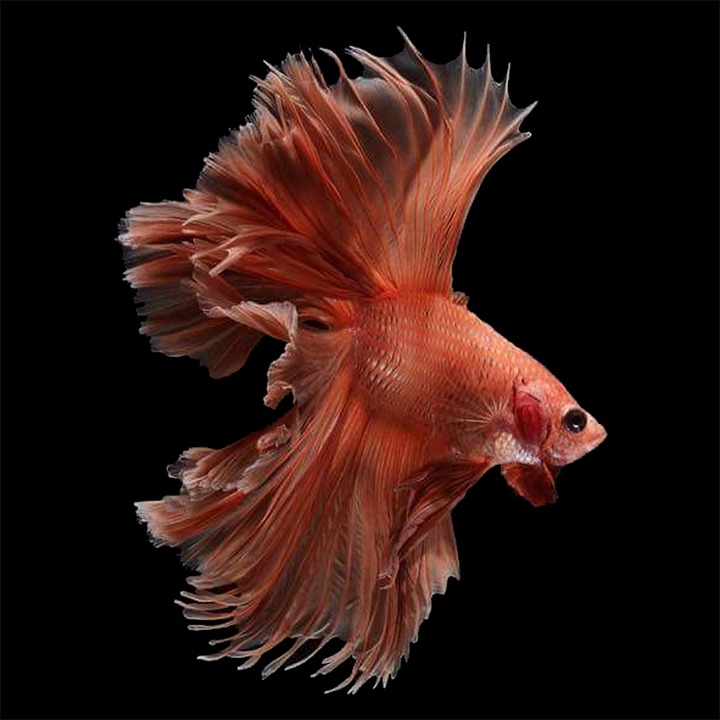Fish behavior is a complex and intriguing subject that has captivated aquarium enthusiasts and scientists for decades. One fascinating behavior that many tank fish exhibit is mirroring each other. This behavior, where fish mimic the movements and actions of their tank mates, can provide valuable insights into their well-being and overall health. In this article, we will explore the reasons behind fish mirroring behavior and its significance for both fish and aquarium owners.
Fish mirroring behavior refers to the phenomenon where fish imitate the actions and movements of their tank mates. This behavior is especially common in species that live in groups or schools, such as tetras, danios, and barbs. By mirroring each other, fish can establish social cohesion and hierarchy within their group.
One of the primary reasons behind fish mirroring behavior is social cohesion and hierarchy. Within a group of fish, mirroring helps establish dominance and submission. Dominant fish may display more pronounced mirroring behavior, while submissive fish may mirror the actions of the dominant fish to maintain group harmony. Mirroring also serves as a form of communication within the group, allowing fish to coordinate their movements and actions.
Stress and anxiety can also lead to mirroring behavior in tank fish. Environmental factors such as inadequate tank size, poor water quality, or the presence of aggressive tank mates can cause stress in fish. Mirroring can function as a coping mechanism for fish, helping them alleviate stress and anxiety. By mirroring the behavior of their tank mates, fish may feel safer and more secure in their environment.
Mirroring behavior also plays a role in mating and courtship displays. During courtship, fish may engage in elaborate mirroring behaviors to attract potential mates. Mirroring can signal reproductive readiness and fitness, indicating to potential mates that the mirroring fish is a suitable partner. This behavior can be particularly prominent in species that engage in complex courtship rituals, such as betta fish.
Observing fish mirroring behavior can have several benefits for aquarium owners. Firstly, it can help assess the health and well-being of fish. Changes in mirroring behavior, such as a sudden decrease or increase, can be indicators of stress or illness in fish. Additionally, harmonious mirroring behavior can be a sign of a well-maintained tank environment with suitable tank mates and appropriate conditions.
Mirroring behavior also enhances the aesthetics of aquarium displays. Watching fish mirror each other creates visually appealing and dynamic scenes within the tank. It also promotes natural behavior in captive fish, allowing them to engage in their instinctual social interactions.
Understanding fish mirroring behavior can also provide insights into species-specific behavior. Different fish species may exhibit unique mirroring patterns or behaviors. Recognizing these patterns can help create suitable tank setups that mimic the natural environment of the fish and promote their well-being.
While fish mirroring behavior is often seen as a normal social behavior, it is essential to address some frequently asked questions to fully understand its implications. Fish mirroring behavior is not always a sign of stress. Multiple factors, such as social hierarchy and courtship displays, can influence mirroring behavior. Differentiating between mirroring behavior and aggression can be done by observing body language and posturing, as well as monitoring the intensity and duration of mirroring.
Mirroring behavior is mainly innate and cannot be trained in tank fish. While some limited success has been reported in training fish to mirror specific actions, it is generally a natural behavior that arises from social interactions and instincts.
Providing mirrors in the tank is not necessary to encourage mirroring behavior. While mirrors can be used to stimulate fish and observe their reactions, relying solely on mirrors for mirroring behavior can have potential drawbacks. Natural stimuli, such as tank mates and the environment, are more effective in promoting mirroring behavior.
There can be negative consequences of constant mirroring behavior. It may cause stress in fish, especially if they feel compelled to constantly mirror their tank mates. Additionally, mirroring behavior can impact individual fish behavior and tank dynamics, potentially leading to aggression or territorial disputes.
In conclusion, understanding fish behavior, including mirroring, is crucial for both aquarium owners and fish enthusiasts. By recognizing the reasons behind this behavior and its implications, we can provide optimal care for our tank fish, enhance their well-being, and create visually captivating aquarium displays. So keep a watchful eye on your fish and enjoy the beauty of their natural interactions.









